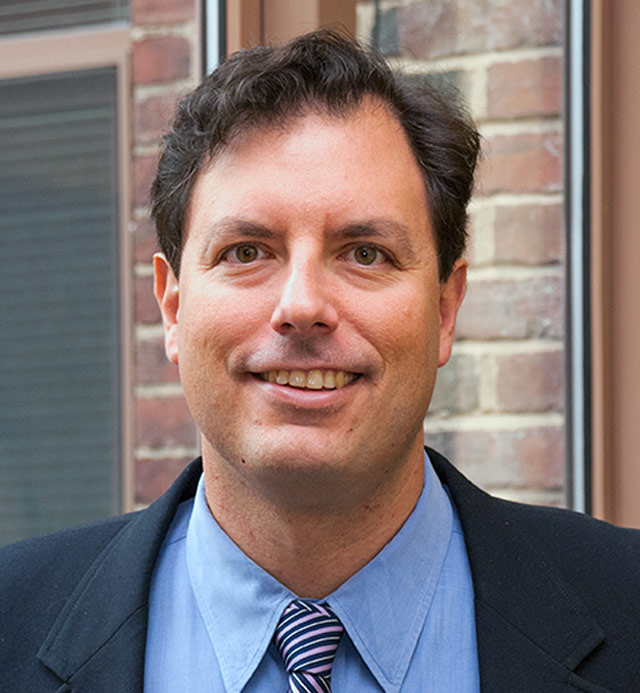-
Staffing, Tracking, and Testing for COVID-19 in Elder Care Facilities: A Q&A with David Grabowski
The coronavirus has disproportionately affected residents of elder care facilities. According to state-reported data, as of the end of August 2020, long-term care facilities had reported more than 390,000 cases of COVID-19, and over 70,000 deaths. Given persistent testing inadequacies, however, even this may be an undercount.
In this Q&A, Professor David Grabowski, an Analysis Group affiliate, spoke with Principal Brian Ellman about the challenges facing both nursing home residents and the industry in the COVID-19 era. Professor Grabowski is a professor of health care policy at Harvard Medical School specializing in health care economics, with a particular focus on long-term care, post-acute care, and nursing home settings.
Roughly 40% of the more than 180,000 COVID-19 deaths in the US have occurred at elder care facilities, even though less than 1% of the population resides in such facilities. What are some of the factors that contribute to making these patients more vulnerable?
I have called COVID-19 a perfect storm in terms of the damage it has inflicted on elder care facility residents and their caregivers. Frail older adults are living in close quarters with one another, and the care is “high-touch,” with staff assisting residents with tasks like eating, dressing, bathing, and toileting. Staff members also move from room to room within a facility and often from building to building, working at multiple facilities.
Further, the lack of paid time off for staff exposed to COVID-19 not only encourages staff with potential exposure to continue to report to work, but also contributes to high staff turnover rates if workers are forced to observe unpaid self-quarantines. Many nursing homes faced staffing shortages prior to COVID-19, and that problem has been magnified during the pandemic.
At the same time, many caregivers lack the PPE [personal protective equipment] – such as gloves, masks, and gowns – needed to battle the spread while keeping themselves and those they come in contact with safe. Our research suggested that one in five nursing homes had a severe shortage of PPE in July, and the fact that nursing homes had to bid against other companies for PPE only exacerbated the problem.
Add asymptomatic transmission to the mix, and these conditions mean that COVID-19 spreads quickly once it has been introduced within a facility, and staff working at multiple facilities may also be carrying the virus from facility to facility.
Are these outbreaks in nursing homes associated with the persistence of the virus in the community, or can they be attributed to less-stringent infection control protocols?
From a policy perspective, it is important that we understand the factors that predict the inter- and intra-facility spread of COVID-19. To date, our research and that of others suggest that the strongest predictor of whether a nursing home has a COVID-19 case is the spread in the local community. Additionally, we found that cases were more likely in larger facilities and facilities with more African American residents. We attribute this latter result to the fact that minority communities have had higher rates of COVID-19, and this has led to greater transmission in nursing homes located in areas with more minority residents.
Interestingly, this research has not shown that lower-quality facilities are more likely to have COVID-19 cases, or even that a history of infection pre-pandemic is significantly related to the current incidence of COVID-19.
What does your research tell you about a path forward?
Obviously, it is critical to have more testing of nursing home residents, staff, and visitors, as well as contact tracing where appropriate. However, COVID-19 testing for staff and residents has been in short supply. There are many pieces to this puzzle, and so far we have had problems fitting them all together.
We are facing not only a lack of available tests but also a shortage of skilled technicians to administer them, as well as insufficient lab capacity to evaluate these tests. As a result, often it has taken between three and seven days for results to come back, which is far too long.
Another challenge is that while best practices would require periodic testing of outside staff with regular access to patients and facilities, it is unclear how these additional tests should be reimbursed. In many cases, low-wage nursing home workers do not have employer-provided health insurance, and their personal insurance providers may be unwilling to pay for the frequent testing required to keep patient populations safe.
At least a partial solution may come from the development of onsite rapid antigen testing. CMS [the Centers for Medicare and Medicaid Services] has indicated that it will provide this rapid testing to all of the approximately 15,400 nursing homes in the country; to date, several hundred facilities have received these antigen testing machines.
Although antigen tests are less accurate than lab-based PCR [polymerase chain reaction] tests, they have the major advantage of providing real-time results. Of course, we must still provide nursing homes with the training and supplies to conduct these onsite tests.
“Obviously, it is critical to have more testing of nursing home residents, staff, and visitors, as well as contact tracing where appropriate. However, COVID-19 testing for staff and residents has been in short supply. There are many pieces to this puzzle, and so far we have had problems fitting them all together.”–Professor David Grabowski
Will increasing protection for staff and patients then mean increasing costs?
It seems clear that we will need to invest in a combination of testing, PPE, and support for the workforce across all nursing homes. For example, one recent study has suggested that adding staff can be effective in limiting the size of an outbreak at a facility.
But yes, all this will come at a cost. For example, the large national chain Genesis reported that operating expenses increased by $21 million in a single month, due solely to the pandemic. Presbyterian Homes & Services, a Minnesota-based nonprofit operator of 16 nursing homes, estimates that the average 72-bed nursing home is spending an additional $2,265 a day on personal protective gear and an additional $1,500 a day on extra nursing staff.
Of course, nursing homes often have very small profit margins. How might financial pressures affect nursing homes’ ability to respond to widespread threats of infection?
Many nursing home residents are dually eligible for Medicaid and Medicare. One of the challenges is that most long-term nursing home care is covered by Medicaid, which often does not fully reimburse the actual cost of care. Historically, lower Medicaid payments for long-stay residents have led to shortfalls and closures at facilities with large numbers of Medicaid beneficiaries.
Nursing homes make ends meet by accepting patients who need short-term care recovering from procedures such as elective knee or hip surgeries, for which the Medicare reimbursement rate is more generous. With COVID-19 leading to a drop-off in elective surgeries, some facilities have had a hard time covering their costs. Occupancy levels have plummeted since the virus began to spread this spring, and the nursing home census dropped by roughly 100,000 residents nationally between January and August.
In addition, in many cases the operator of a facility is responsible for paying rent and for the costs of providing care, but does not actually own the real estate. Thus, the operator is unable to leverage this valuable asset and is forced to rely solely on a diminishing revenue stream during these challenging times.
How can we adjust current practices to mitigate the effects of the next surge, or the next pandemic?
One of the biggest questions will be, what is the most appropriate role for the federal government? For example, some of the financial strain on nursing homes might be eased if Medicare rates could be brought more in line with costs, and if Medicaid paid a higher rate commensurate with the costs of delivering high-quality, long-term care to frail older adults. In many states, this would require greater federal contributions to Medicaid.
Other policy changes can also be considered, such as directing a fixed share of Medicare and Medicaid reimbursement dollars to caregivers through policies such as wage floors and wage pass-through policies that earmark payment increases for staff. Then, over and above ensuring better pay for nursing home staff, legislation might also require that nursing homes have adequate numbers of staff to deliver high-quality care. Finally, I think it’s worth supporting efforts to recruit and retain nursing home staff.
At the state level, governments must have adequate resources to enforce existing nursing home regulations. However, state revenues can be quite volatile, while the federal government has broader taxing and borrowing authority. Placing more of the costs and risks for future cost growth on the federal government could lead to greater stability, as well as more uniformity in coverage and payments across states.
An additional question is whether policymakers would move beyond federalizing long-term care coverage and consider more comprehensive financing reforms for long-term care on either a voluntary or mandatory basis. Prior to COVID-19, I thought this was fairly unlikely, but the pandemic has led to a new focus on how we finance and deliver long-term care services for older adults. ■
From Forum 2020.


